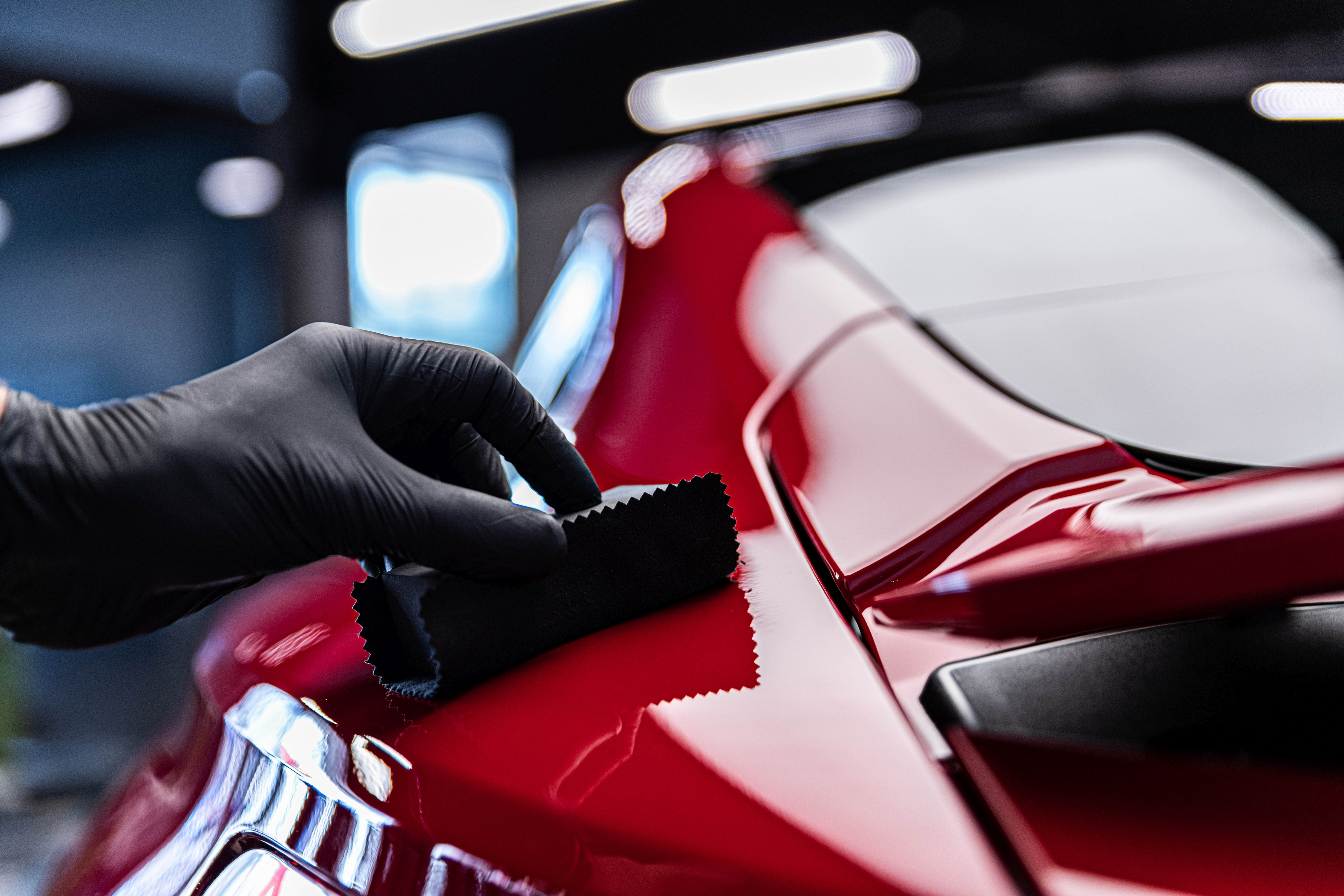Exploring the Science Behind Ceramic Layer and Its Influence On Cars And Truck Detailing
The application of ceramic finish in auto detailing represents a considerable advancement in automobile care, rooted in its advanced chemical homes, mostly silica dioxide and titanium dioxide. Understanding the science behind these materials reveals not only the safety advantages they supply yet also their role in enhancing a car's aesthetic durability. As we discover the details of the application process and the long-lasting effects for lorry upkeep, it comes to be clear that the choice of ceramic covering can fundamentally alter one's method to automobile care. What considerations should be made before dedicating to this transformative option?
What Is Ceramic Layer?
Ceramic coating is a modern-day remedy that has actually obtained popularity in the auto describing industry for its ability to give resilient protection for automobile surface areas. This sophisticated safety layer is usually made up of silica dioxide (SiO2), which forms a solid bond with the vehicle's paint, producing a sturdy shield against ecological contaminants. Unlike standard wax or sealers, ceramic coverings use superior resistance to UV rays, chemical spots, and physical abrasions.
The application of ceramic layer entails a precise procedure, where the lorry's surface is completely cleansed and sanitized before the covering is used (Ceramic Coating). As soon as healed, the covering improves the automobile's gloss, deepness, and quality, providing a showroom-quality surface that lasts for many years. Among the vital benefits of ceramic coating is its hydrophobic buildings, which fend off water and dirt, making maintenance much easier and lowering the regularity of cleans
The Chemistry of Ceramic Coating
A basic facet of ceramic covering lies in its chemical make-up, primarily characterized by the visibility of silica dioxide (SiO2) This substance is important to the formation of a resilient, protective layer that bonds chemically to the vehicle's surface.
In enhancement to SiO2, several ceramic layers include titanium dioxide (TiO2) and various other ingredients to improve their performance attributes. TiO2, for example, adds to increased hardness and chemical resistance. The interaction in between these substances produces a special molecular structure that offers a high level of defense versus ecological variables such as UV rays, acid rainfall, and oxidation.
Moreover, the application process often entails a careful preparation of the surface area to guarantee optimum bond of the covering. This chemistry not just makes sure a resilient finish yet additionally enhances the visual charm of the vehicle. Recognizing the intricate chemistry behind ceramic coatings is essential for outlining professionals that aim to supply superior security and longevity for their customers' vehicles.
Benefits of Ceramic Coating
While describing professionals frequently highlight the advantages of ceramic finishings, their benefits prolong far beyond looks. Ceramic layers develop a hydrophobic surface area that repels water, crud, and dust, dramatically lowering the regularity of cleans and the initiative needed to maintain a vehicle's appearance.
In addition, ceramic coatings boost the long life of the automobile's surface. Unlike conventional waxes or sealants, which might last a couple of months, ceramic finishings can withstand for years, providing a lasting remedy for auto treatment. This toughness converts to cost savings, as proprietors are less most likely to require regular reapplication.
Additionally, ceramic layers are immune to chemical stains and etching, which can happen from acidic substances like bird droppings or tree sap. This resistance not just protects the vehicle's aesthetics yet likewise minimizes prospective damage - Ceramic Coating. On the whole, the investment in ceramic coating uses automobile proprietors a considerable return in regards to security, ease of maintenance, and long-lasting aesthetic allure, making it a progressively popular option in the world of automobile describing
Application Process Described

When the surface is sufficiently prepared, the ceramic finishing can be applied. It is generally done in a regulated setting, such as a garage or outlining bay, to stop contamination from dust and debris. Making use of an applicator pad, the service technician applies the covering in small areas, operating in a crosshatch pattern to guarantee also protection. It is vital to follow the supplier's directions concerning application density and healing times.
As soon as cured, the ceramic finish creates a strong bond with the paint, offering improved defense and a glossy finish. Appropriate application is crucial to make the most of the durability and performance of the ceramic coating.

Long-term Influence On Lorry Treatment
The long-lasting impact of ceramic coating on lorry care is significant, as it basically changes how proprietors preserve their cars. By creating a long lasting, hydrophobic layer on the car's surface, ceramic layers lessen the adherence of dirt, crud, and pollutants. This residential or commercial property lowers the frequency of cleaning needed, ultimately preserving water and find out here now cleaning items.
Furthermore, the UV defense provided by ceramic coatings assists to prevent oxidation and fading of the automobile's paint, preserving its visual allure and resale value with time - Ceramic Coating. This protective obstacle also minimizes the likelihood of scratches and swirl marks, which prevail issues in standard paint finishes
Furthermore, ceramic layers help with less complicated maintenance, enabling proprietors to clean their cars with marginal site link initiative. The smooth surface makes it tough for impurities to bond, enabling easier elimination throughout regular cleaning.
In the future, the financial investment in ceramic layer may result in set you back financial savings in vehicle care product or services. Generally, the sustaining advantages of ceramic coverings not only improve the look of lorries yet also add to a more effective and sustainable strategy to lorry maintenance.
Conclusion
In conclusion, the application of ceramic finishing stands for a substantial innovation in car detailing, driven by its unique chemical composition of silica dioxide and titanium dioxide. This technology not only enhances the aesthetic appeal of cars however also offers robust protection against ecological threats and put on. The lasting advantages, consisting of minimized maintenance frequency and enhanced longevity, emphasize the worth of ceramic coverings as a necessary financial investment for preserving vehicle look and honesty gradually.
